By Maureen D. O’Connell
“How is it going with your implementation of IM K–5 Math Centers?”
That’s my favorite question to ask during professional learning for IM K–5 Math. The response is a pedagogical temperature check about where teachers and grade levels are in their IM journey. Schools that report success using IM Centers are generally satisfied with their implementation. In cases where Centers have not been unpacked and used regularly, I hear teachers say things like, “my students need more practice” or “my students are not as fluent as I’d hoped.”
Without a doubt, a key factor in the successful implementation of IM K–5 Math is the frequent use of IM Centers. These Centers, aligned to lesson and unit learning goals, provide joyful, purposeful practice, and benefit both students and teachers.
Centers offer:
- the gift of time for students to muck about in the big mathematical ideas of the unit
- meaningful contexts for engaging fluency development
- opportunities for teachers to observe students in the act of mathing
As my Alaskan colleague Nikki Szajkowski believes, IM Centers offer students “some playfulness with math, and give them some voice and choice.”
Teachers are working beyond what seems humanly possible these days. With these overflowing plates in mind, let’s talk about how teachers are making IM Centers work so that everyone can enjoy the benefits of using IM Centers. I asked colleagues from across the country to weigh in.
Here are their top tips:
Getting Started
- Choose a small number of Centers to get started.
Center Materials
- Centers do not need to be fancy to be effective.
- Use inexpensive tools to protect and store Center materials.
Center Purpose
- Use Centers to gather data about what students know and are able to do.
- Use Centers to spread math joy and develop math identity.
- Use Centers for joyful practice with major work of the grade and to develop fluency.
Getting Started
- Choose a small number of “Power Centers” to get started.
Start small! Be strategic about selecting your first two or three Centers.
Consider using the IM Center Navigation Tool. Which Centers appear in your upcoming unit? Are there Centers that appear in multiple units? I am calling these “Power Centers”—high leverage Centers that can be used again and again to deepen understanding and promote practice. (Of course, once you begin using IM Centers you will realize the power in all of the Centers!)
Center Materials
- Centers do not need to be fancy to be effective.
Margaret Betts, Math Coach in Easthampton, MA says, “IM Centers are simple but not simplistic. The math is exciting enough that they don’t require fancy graphics.”
Centers are intentionally not fancy. As part of its equity stance, IM designed Centers without color, the need for high quality cardstock, or lamination. All games can be played with basic materials: number cubes, game pawns, paper clips. You can keep these materials (one for every two students) stored together for easy daily use.
Download all of the blackline masters for game boards and recording sheets required for your “Power Centers.” Make enough copies to have several partners playing the Center at the same time, e.g. enough for three groups to be using the materials.
These photocopies are your Center materials.
- Use inexpensive tools to protect and store Center materials
Work smart: don’t make things twice! Centers are designed to be used over and over again, deepening learning and fluency. Figure out how you will protect your materials and store them so that they can be used repeatedly.
I used plastic page protectors to store printed Center materials. I labeled them with a permanent marker, for example: “Number Race – 2,” with the number indicating the stage.
Then, I stored these sheets in large Zip-lock bags with any materials needed—wipe off markers, dice or counters. I kept the bags in an old milk crate, alphabetically, because I knew they would be used in many units.
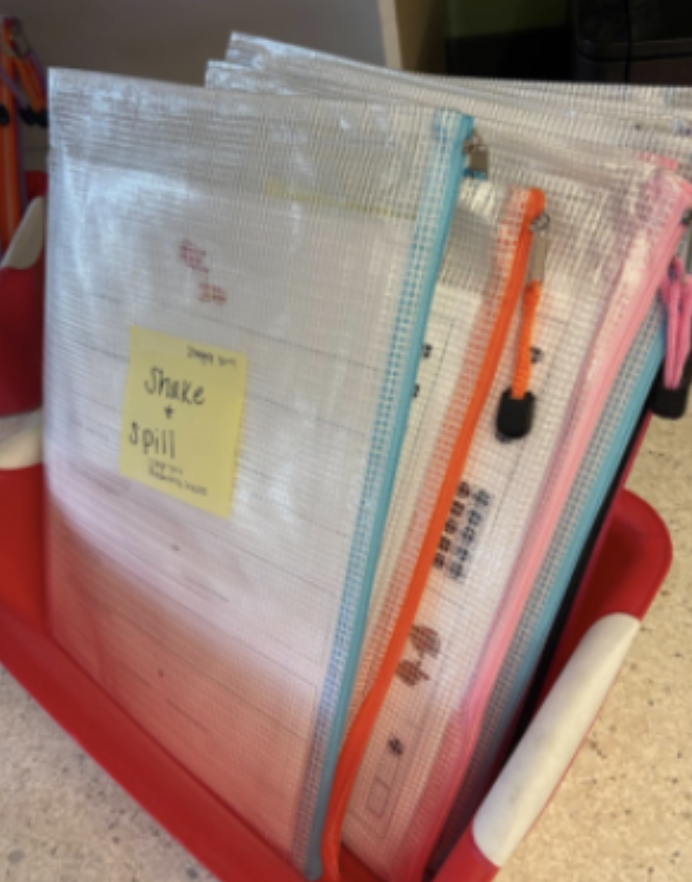
Photo c/o Rachel Rundstrom
Rachel Rundstrom’s durable folder system (above) is fancier than what I used, but similar in structure.
Winnetka, Illinois Grade 5 Teacher Melissa Hilty writes, “We created paper folders with the center name and stage on the outside and put the recording sheets inside. We put the recording sheets into plastic paper protectors so that students could use dry erase markers while playing. That way we didn’t waste paper and students didn’t have to manage multiple pages from playing the Centers. I have a wall of math manipulatives separated in bins so, when it’s a Center day. I pull out the bins for the necessary materials.”
Ipswich, MA Kindergarten teacher Jena Woodworth used hanging file folders to anchor her system. Each stage of the Center is labeled in a separate file folder. She makes 4 sets of student materials and color codes them to help students with cleaning up. It represents work up front at the start of each unit, but now she is ready to enjoy these with students for many years.
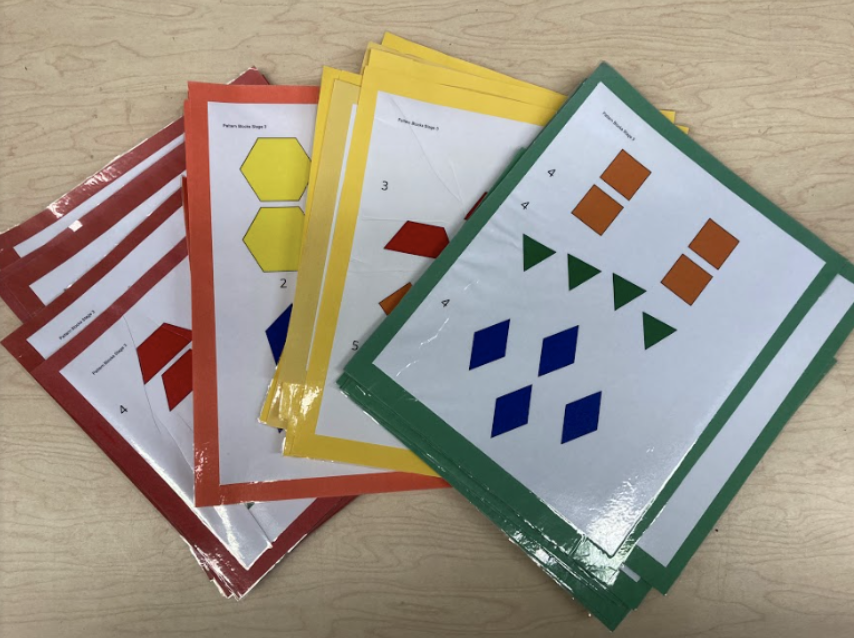
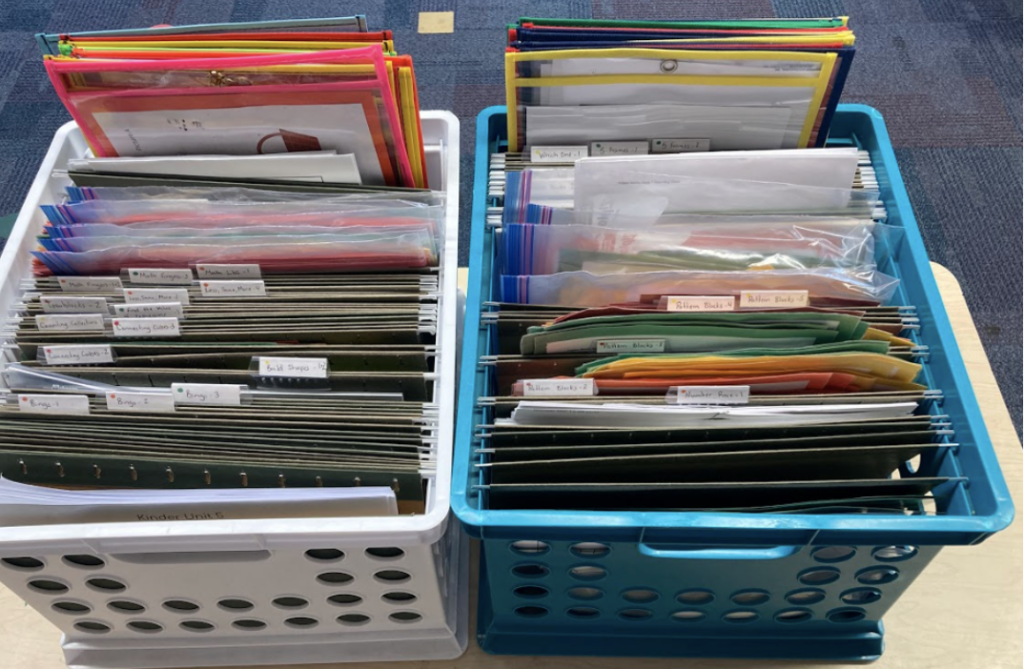
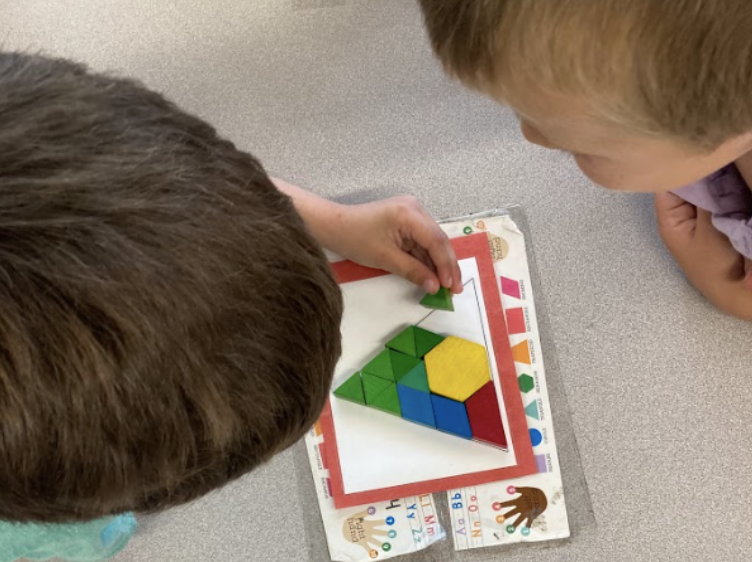
Photos c/o Jena Woodworth
Veteran grade 2 teacher Susan Speak recommends only introducing one new Center during a Center period, using familiar Centers as the other options. This reduces the time spent giving directions, leaving more time for the mathing in Centers. Susan finds it easy to differentiate during Center time because of the stages provided.
Some schools ask family volunteers to help with copying and assembling.
Math Coach Kelley Nogar reports that teachers in Portland, ME are using everything from plastic storage bags to cloth bins to make their Center life manageable.
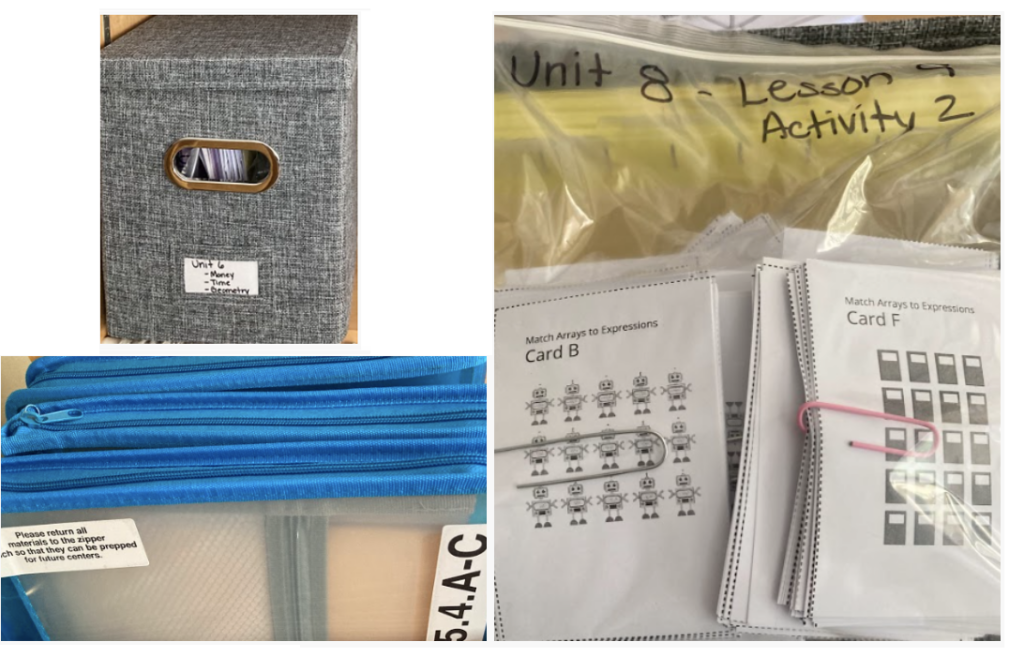
Photos c/o Kelley Nogar

Photo c/o Ryan Pickard, Easthampton, MA
Grade 4 teacher Ryan Pickard used recycled containers to create student kits that serve all of the grade’s Centers.
- Use Centers to gather data about what students know and are able to do
Center time gifts you the opportunity to pull up and listen to students as they play and explain their math thinking. With kindergarten and primary students, these authentic interactions allow the teacher to observe many of the indicators on the checklists (see example below).
Consider having the section checklists available on a clipboard during center time. Confer with students as they engage in the Centers. Observation is a powerful assessment tool.

Teachers in upper grades without designated Center times or days often ask how to make space for them. Some teachers use the remainder of the math block after students complete their brief Section Checkpoint as Center time. Others plan a Center time at another time of day where they have 15 or 20 minutes. Other teachers eliminate a lesson activity and add a Center that supports the lesson learning goal. The important message is to make the time for Centers.
In her 2021 blog on Achieve the Core, Leah Baron writes:
“Only assessing student understanding in written form is like only being able to see one ray of the entire sunset. I learned that seeing other students shine created a domino effect of inspiration for students to shine their own light—one ray, then another, and another creating multiple rays until the sky bursts with radiance and true brilliance. It is a magical experience for the classroom to fill with joy and a brilliant luminosity as students use higher level thinking to illuminate their understanding.”
- Use Centers to spread Math Joy and to develop Fluency
After you’ve made and become familiar with your first few Power Centers, introduce them to your students. Be sure to relate Center time to your anchor chart of class mathematical community norms (created in the first unit of the year in each grade of IM K–5 Math) or create a chart that focuses on Centers explicitly.
Revisit your poster regularly, and add student ideas. Ask, “What norms were used in Centers today?” or “How did we work as mathematicians today?”
Save a few minutes to have a synthesis time after Centers. You might highlight the important math discussions that happened during Center time. When students share the ideas they uncover during Centers, you elevate students as doers of math—as authors of important math ideas. You also elevate Centers as a critical part of your math block.
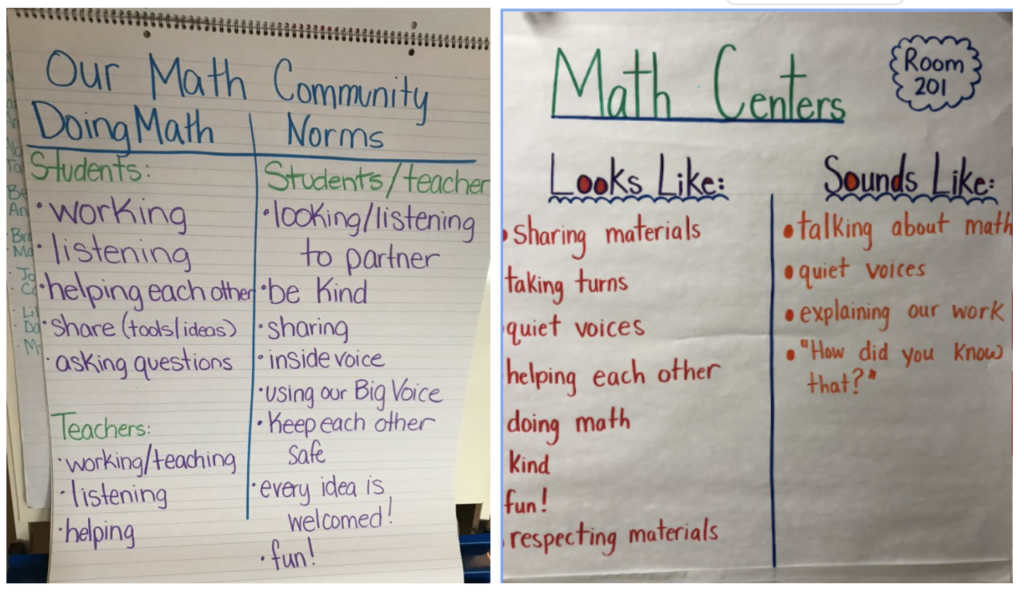
Photo c/o Valerie Effland, K teacher, Springfield (left). MO Photo c/o Maureen O’Connell (right)
You will see smiles and playfulness as students use materials that grow their number sense and enhance fact fluency while deepening understanding of the major work of the grade. You will see students building their math identity as they successfully engage in grade-level mathematics and discourse.
IM K–5 Centers support this magical vision of shared student brilliance, learning with and from each other. With strategic choices and forethought, teachers and students can reap the many benefits of IM Centers.

Capture Numbers
Photo by Andrea Welch
Next Steps
Small steps can lead to big change. Centers offer your students joyful, purposeful opportunities for engaging practice with important skills, fluency and math discourse. They provide teachers a forum for gathering important information about what students know and are able to do.
We’d love to hear about Center use in your IM K–5 classroom. Share your photos and top tips for making and storing Center materials on Twitter #LearnWithIM and on Instagram.
